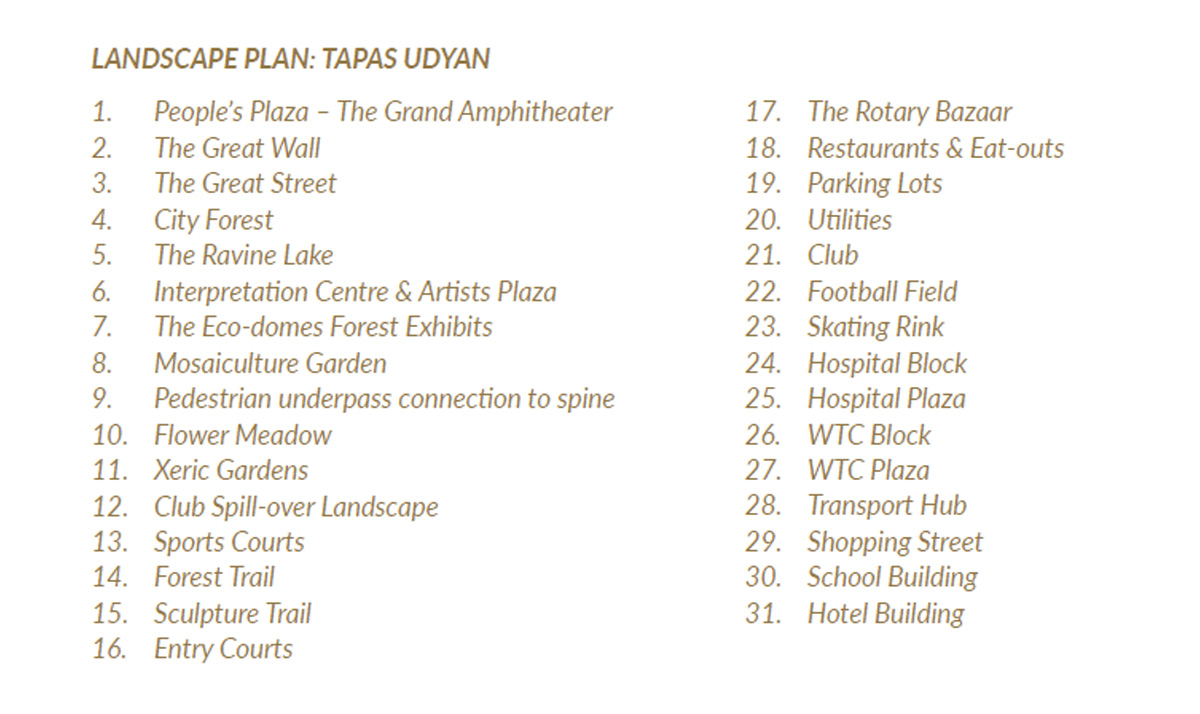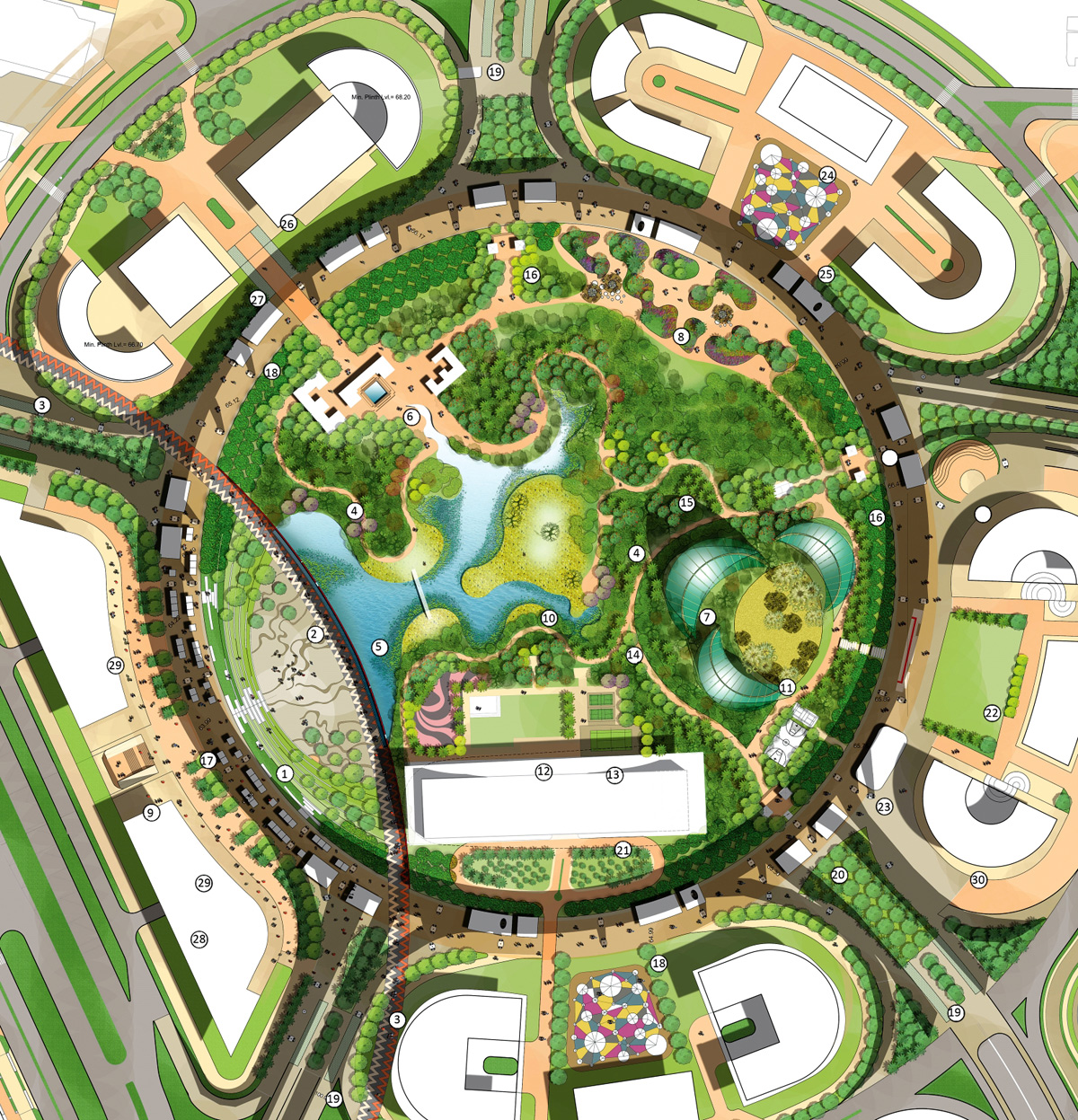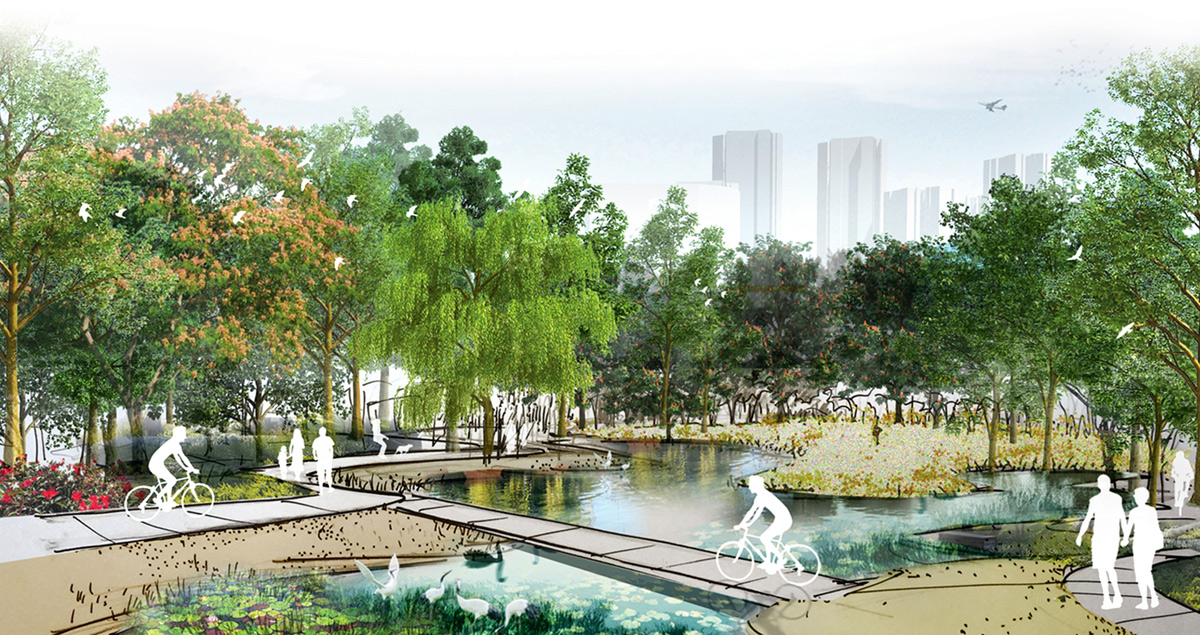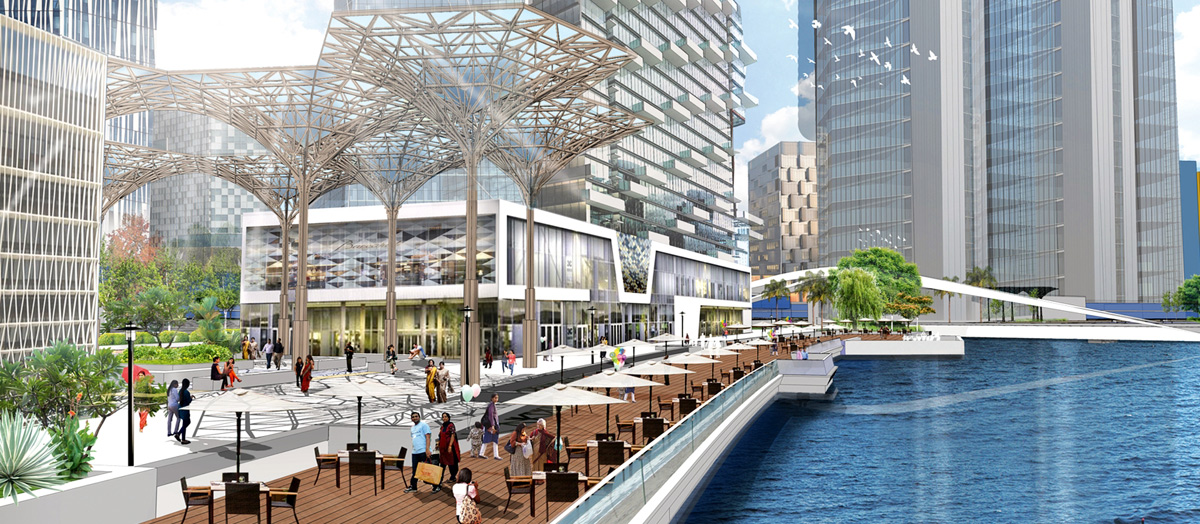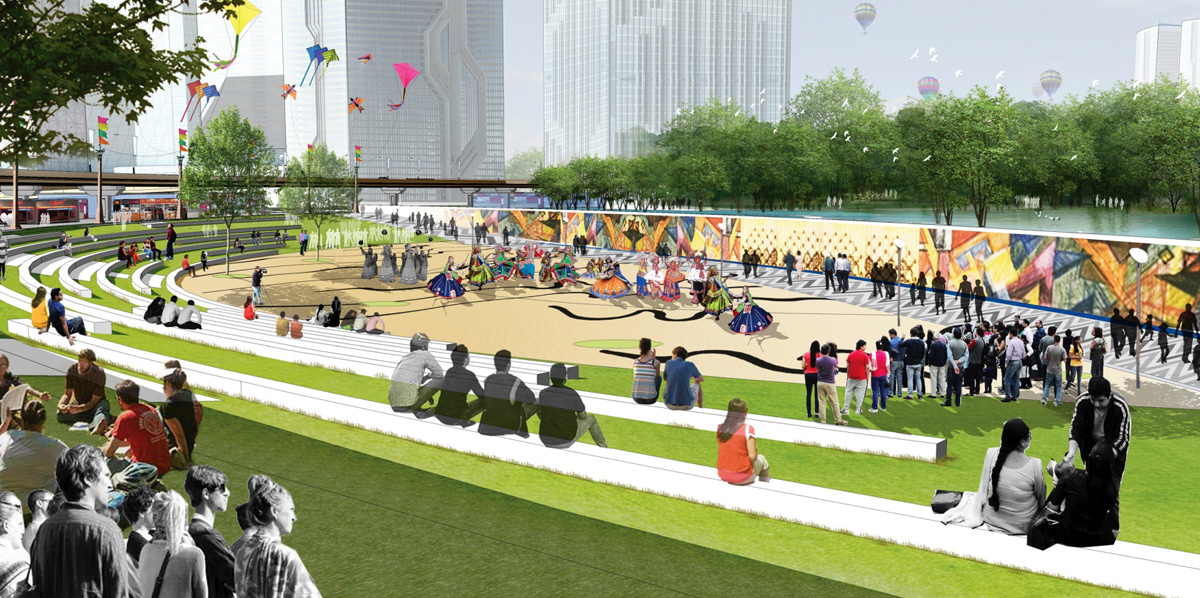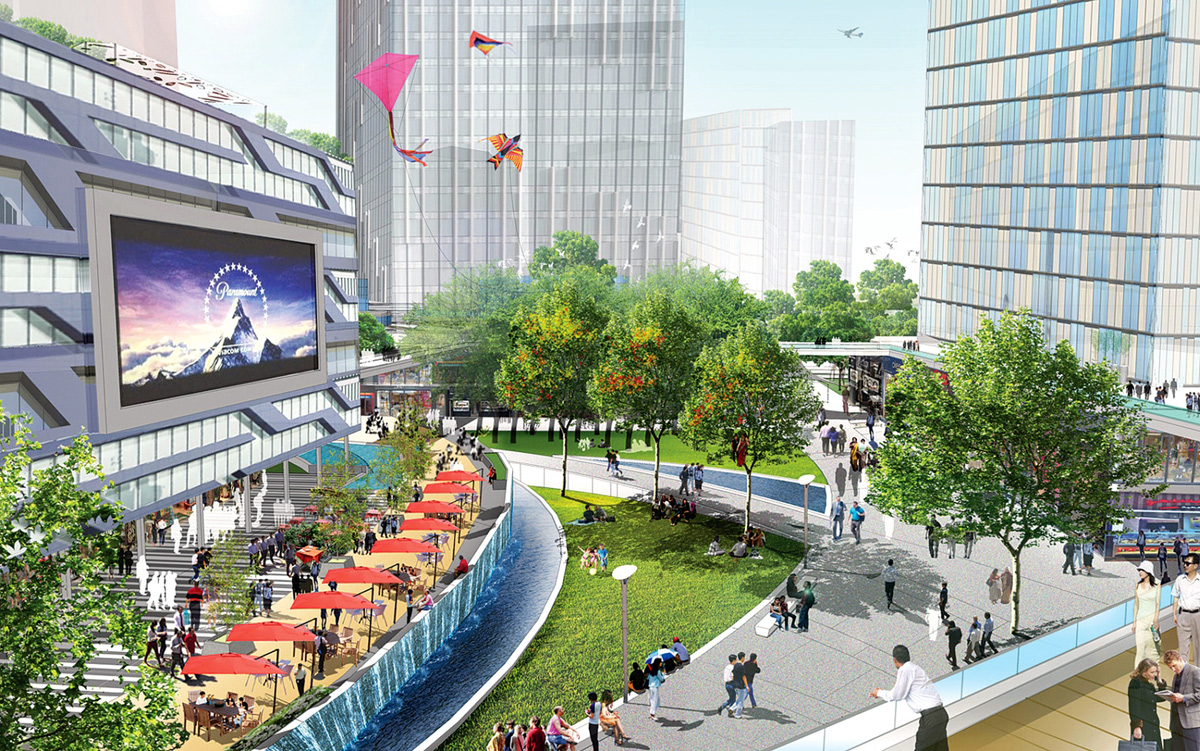Gujarat
Client: Gujarat International Finance & TEC-City / GIFT
Master Planner & Architect: Design Accord
Area: 900.00 Acres
Status: Selected as the best Indian entry with final four international entries
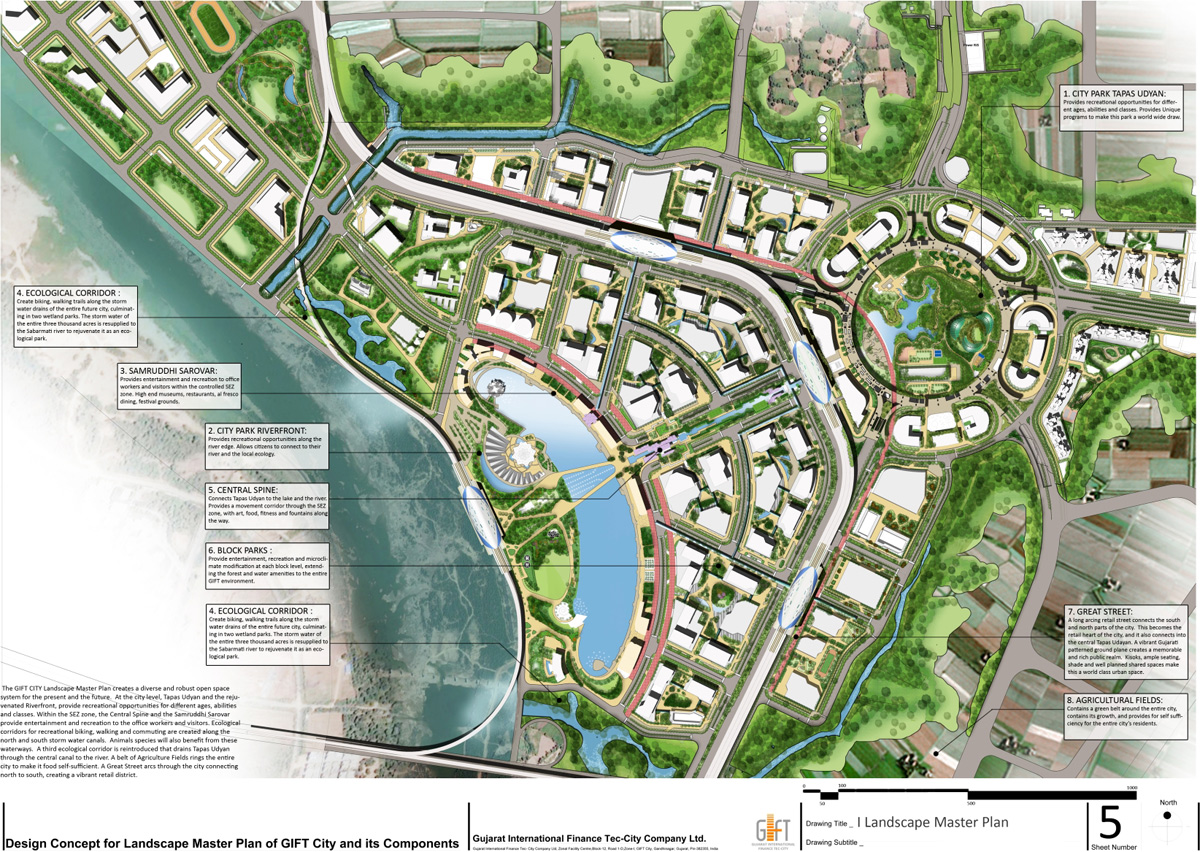
GIFT City is being developed as a global financial business district - the first of its kind Smart City in India - designed to surpass globally benchmarked financial centers. It spans an area of 3.58 square kilometers near Gandhinagar, Gujarat. Known for its vibrant culture, colors, crafts, textiles, and festivals, Gujarat is also one of India's most drought- prone states.
The proposed landscape design has a central theme focused on creating a forest that recharges and resupplies water while generating climatically appropriate public spaces. It aims to mitigate ecological imbalances through landscape restoration and innovative interventions. The city and forest are envisioned to grow together, with water being collected, retained, and redirected to the river. This will reduce the future urban heat island effect and create water self-sufficiency. Consequently, a thriving, ecologically sustainable city with diverse flora and fauna and a gentler microclimate will emerge.
The landscape design incorporates urban agriculture and open spaces— spanning block-level, community, and recreational zones—closely influenced by people and the built environment. The GIFT City Landscape Master Plan establishes a diverse and robust open-space system for both present and future needs.
At the city level, a Tapas Udyan and a rejuvenated riverfront provide recreational opportunities for everyone. Within the SEZ zone, a central spine and the Samruddhi Sarovar offer spaces for entertainment and recreation for office workers and visitors. Ecological corridors along the north and south stormwater canals are designed for recreational biking, walking, and commuting, benefiting both humans and animal species. Additionally, a third ecological corridor is reintroduced, connecting Tapas Udyan to the river via the central canal.
Surrounding the entire city, a belt of agricultural fields enhances food self- sufficiency. A central street arcs through the city, connecting the north and south, creating a vibrant retail district. This space will be enriched with kiosks, seating, shade, and shared spaces, making it an exciting urban hub while preserving the cultural fabric of the region.
